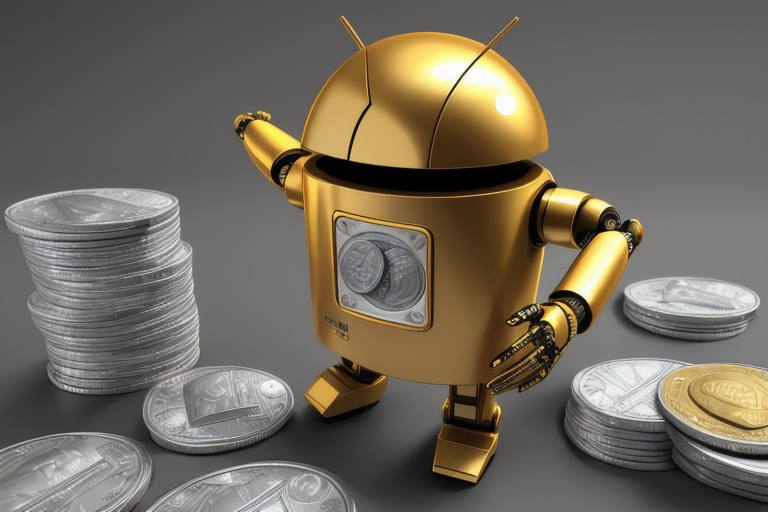The evolution of Artificial Intelligence (AI) has been a grand narrative that intertwines with the history of human ingenuity. Its story, steeped in both triumphs and challenges, traces back to a time when the very notion of machines mimicking human intelligence was pure science fiction. While the term 'Artificial Intelligence' may seem a product of the modern age, the concept dates back much further—to the early 20th century, and even beyond in the form of myths and legends about automated beings. Our understanding of AI today benefits enormously from unpacking its rich history, as each milestone lays the groundwork for the transformative innovations we now witness daily. In this exploration, we will not only track the major landmarks in AI development but also glean insights into its potential trajectories for reshaping industries, jobs, and daily life.
The evolution of Artificial Intelligence (AI) has been a grand narrative that intertwines with the history of human ingenuity. Its story, steeped in both triumphs and challenges, traces back to a time when the very notion of machines mimicking human intelligence was pure science fiction. While the term 'Artificial Intelligence' may seem a product of the modern age, the concept dates back much further—to the early 20th century, and even beyond in the form of myths and legends about automated beings. Our understanding of AI today benefits enormously from unpacking its rich history, as each milestone lays the groundwork for the transformative innovations we now witness daily. In this exploration, we will not only track the major landmarks in AI development but also glean insights into its potential trajectories for reshaping industries, jobs, and daily life.
Early Concepts and Origins
The seeds of artificial intelligence were sown in storytelling, with ancient myths of statues coming to life or automatons performing tasks. These narratives captured imaginations but also inspired the first contemplations of machines that could simulate life or thought. Fast forward to the 20th century, where the formal roots of AI sprouted in tandem with computing. Early forays into the realm of 'thinking machines' include Alan Turing's theoretical Turing Machine and his seminal paper "Computing Machinery and Intelligence," both setting the stage for what would become the field of AI.
The Birth of AI as a Discipline
In the summer of 1956, a seminal event took place at Dartmouth College: a gathering of brilliant minds for a workshop that would formally christen the field of AI. Researchers like John McCarthy and Marvin Minsky came together with a shared vision of creating machines capable of reasoning and learning. This gathering marked the dawn of AI as an official domain of academic pursuit, with subsequent decades bearing witness to both hype-filled 'AI winters' and seasons of renewal and innovation.
The Rise of Machine Learning
A significant turning point in AI history came with the emergence of machine learning, shifting the focus from hard-coded intelligence to algorithms capable of learning from data. The field has grown exponentially, branching into deep learning, reinforced learning, and other sophisticated models. These advances allowed machines to recognize patterns, make predictions, and even outperform humans in certain cognitive tasks—a leap forward that would redefine possibilities.
The Current Landscape of AI
Today's AI landscape is dotted with notable achievements. From the deep learning systems that power image and speech recognition to the conversational chatbots that mimic human dialogue, AI is infiltrating every corner of technology and industry. The past decade alone has witnessed unprecedented growth in AI capabilities, with key breakthroughs in natural language processing, computer vision, and autonomous systems.
AI in Industry: Robotics and Beyond
One area where AI stands to make a monumental impact is in the realm of robotics. Afforded the capacity to perceive, interpret, and interact with their environments, AI-driven robots are well on their way to revolutionizing sectors like manufacturing. Meanwhile, autonomous vehicles are set to redefine transportation, and intelligent systems find new ways to enhance healthcare services.
The Future Workforce and AI
As businesses of all sizes leverage AI, the workforce will experience a seismic shift. Automating routines will inevitably lead to job displacement, but concurrently, it will spark the creation of new roles. Navigating this transition will call for workers to adapt and reskill, ensuring they can thrive alongside AI technologies. Beyond the workplace, AI will continue to mold customer interactions, presenting more personalized and efficient experiences.
A Symbiotic Relationship
The future of AI is not one of standalone machines but of collaboration with humanity. The synergy of human and artificial intelligence promises advancements in productivity, safety, workflow efficiency, and creative problem-solving. Embracing this partnership allows for a better understanding of AI's capabilities and limitations, ensuring its development is guided in a direction that augments rather than replaces human effort.
Conclusion
The trek into the world of AI is one of continuous discovery and advancement. As we glimpse ahead, we see a future ripe with potential: a landscape where AI not only influences but elevates our way of life. The allure of what lies ahead encourages us to remain steadfast in our pursuit of knowledge, keeping pace with the strides AI is destined to make in the years to come. It is an exhilarating time to be part of an AI-driven era, and we remain optimistic about the positive changes it will herald for society at large.
Information for this article was gathered from the following source.

